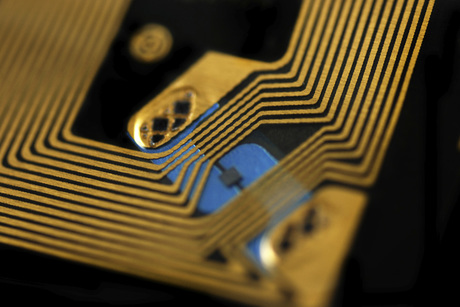New RFID chips prevent side-channel attacks

Researchers at Texas Instruments and MIT have developed a new type of RFID chip that is “virtually impossible to hack”.
Texas Instruments has built several prototypes of the new chip, to the researchers’ specifications, and in experiments the chips have behaved as expected.
The new chip is designed to prevent so-called side-channel attacks, according to Chiraag Juvekar, a graduate student in electrical engineering at MIT and first author on the new paper. Side-channel attacks analyse patterns of memory access or fluctuations in power usage when a device is performing a cryptographic operation, in order to extract its cryptographic key.
“The idea in a side-channel attack is that a given execution of the cryptographic algorithm only leaks a slight amount of information,” Juvekar said.
“So you need to execute the cryptographic algorithm with the same secret many, many times to get enough leakage to extract a complete secret.”
One way to thwart side-channel attacks is to regularly change secret keys. In that case, the RFID chip would run a random-number generator that would spit out a new secret key after each transaction.
A central server would run the same generator, and every time an RFID scanner queried the tag, it would relay the results to the server, to see if the current key was valid.
Blackout
Such a system would still, however, be vulnerable to a ‘power glitch’ attack, in which the RFID chip’s power would be repeatedly cut right before it changed its secret key. An attacker could then run the same side-channel attack thousands of times, with the same key. Power-glitch attacks have been used to circumvent limits on the number of incorrect password entries in password-protected devices, but RFID tags are particularly vulnerable to them, since they’re charged by tag readers and have no onboard power supplies.
Two design innovations allow the MIT researchers’ chip to thwart power-glitch attacks: one is an on-chip power supply whose connection to the chip circuitry would be virtually impossible to cut and the other is a set of ‘non-volatile’ memory cells that can store whatever data the chip is working on when it begins to lose power.
For both of these features, the researchers use a special type of material known as a ferroelectric crystal. As a crystal, a ferroelectric material consists of molecules arranged into a regular three-dimensional lattice. In every cell of the lattice, positive and negative charges naturally separate, producing electrical polarisation. The application of an electric field, however, can align the cells’ polarisation in either of two directions, which can represent the two possible values of a bit of information. When the electric field is removed, the cells maintain their polarisation.
Texas Instruments and other chip manufacturers have been using ferroelectric materials to produce non-volatile memory, or computer memory that retains data when it’s powered off.
Complementary capacitors
A ferroelectric crystal can also be thought of as a capacitor, an electrical component that separates charges and is characterised by the voltage between its negative and positive poles. Texas Instruments’ manufacturing process can produce ferroelectric cells with either of two voltages: 1.5 or 3.3 V.
The researchers’ new chip uses a bank of 3.3 V capacitors as an on-chip energy source. But it also features 571 1.5 V cells that are discretely integrated into the chip’s circuitry. When the chip’s power source — the external scanner — is removed, the chip taps the 3.3 V capacitors and completes as many operations as it can, then stores the data it’s working on in the 1.5 V cells.
When power returns, before doing anything else the chip recharges the 3.3 V capacitors, so that if it’s interrupted again, it will have enough power to store data. Then it resumes its previous computation. If that computation was an update of the secret key, it will complete the update before responding to a query from the scanner. Power-glitch attacks won’t work. Because the chip has to charge capacitors and complete computations every time it powers on, it’s somewhat slower than conventional RFID chips. But in tests, the researchers found that they could get readouts from their chips at a rate of 30 per second, which should be more than fast enough for most RFID applications.
The MIT researchers’ work was also funded by the Japanese automotive company Denso.
Li-Fi GigaDock transceivers enhance satellite sustainability
The Fraunhofer Institute for Photonic Microsystems has developed a transceiver that guarantees...
Using nuclear radiation to transmit digital data wirelessly
Radio waves and mobile phone signals rely on electromagnetic radiation for communication; now...
Wireless charging of multiple devices simultaneously
Electronic devices equipped with a new receiver can simultaneously receive energy to charge...






